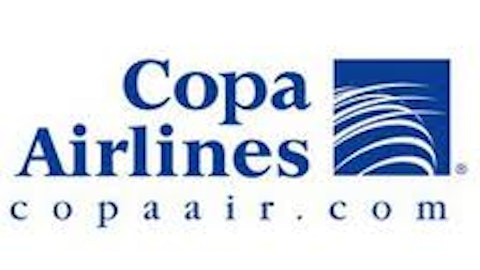The airline industry has a singular talent for draining the pockets of well-intentioned investors. Highly leveraged balance sheets and bankruptcies are the norm. Significant labor costs and unpredictable jet fuel prices wreak havoc on variable costs. Yet some airlines generate solid returns quarter after quarter. Alaska Air Group, Inc. (NYSE:ALK), Ryanair Holdings plc (ADR) (NASDAQ:RYAAY), Southwest Airlines Co. (NYSE:LUV), and Copa Holdings, S.A. (NYSE:CPA) each manage to be consistently profitable. Let’s examine a few themes they share in common, and zero in on their individual strategic ideas.

1. Go regional
None of the four airlines above tries to compete on a grand international scale, with presence in every metropolitan area that looks enticing on a map. Instead, each confines itself more or less to a geographical theme. Alaska Air Group, Inc. (NYSE:ALK), for example, primarily focuses on the West Coast of the U.S., along with Alaska (naturally) and Hawaii, with some coverage in the Midwest and on the East Coast. Ryanair Holdings plc (ADR) (NASDAQ:RYAAY) operates as a European carrier, with comprehensive coverage across the continent.
2. Maintain a uniform fleet
Southwest Airlines Co. (NYSE:LUV) pioneered the practice of buying a single type of aircraft from the same manufacturer, which cuts down on maintenance costs significantly, as less specialization of maintenance is required and a standard extra-parts inventory can be maintained at various airports. Large carriers that choose to service a variety of hubs and both short- and long-haul flights can end up like US Airways, which stocks its fleet with multiple model series from at least three different airline manufacturers.
3. Invest in a fuel-efficient platform
The actual aircraft that makes up a uniform fleet is a significant decision. All four airlines have invested heavily in the fuel-efficient Boeing 737 platform. Variants of the 737 represent nearly all of the these companies’ active fleets. The 737 has been in continuous production since 1967, and it has been marked by continuous evolution in fuel efficiency and performance in the short-to-medium-range flight segment. So after choosing to implement a uniform fleet strategy, each of this group has voted the venerable 737 series with their checkbooks and long-term debt capacity.
Beyond these three key points, each airline has a strategic bet fueling its returns:
Alaska Airways
Alaska Air Group, Inc. (NYSE:ALK) focuses on return on invested capital, or ROIC, as a key performance metric. ROIC is an excellent metric for an airline to consider, as it counts all invested capital, including debt a company must repay, as the base on which financial returns are earned. ROIC forces a company to understand its returns in the context of its debt. In 2012, the airline achieved an ROIC of 13% .
Alaska Air Group, Inc. (NYSE:ALK) also invests in its people. In 2012, Alaska’s net income as a percentage of revenues was 6.8%. It could have been 8.6%, but the company paid out $88 million of variable incentive pay to its workforce. By making such a significant discretionary payment, the company is proving the premise that giving its workforce an incentive to work around a “common set of goals” will enhance its earnings and reciprocally reward its people.
Ryanair
Ryanair Holdings plc (ADR) (NASDAQ:RYAAY) is well known for its low-cost fares. It supplements these with incremental revenue opportunities, which are known in the industry as “ancillary revenues.” But less heralded is Ryanair Holdings plc (ADR) (NASDAQ:RYAAY)’s rabid attention to cost control. The company enjoys the lowest cost per passenger among European airlines.
